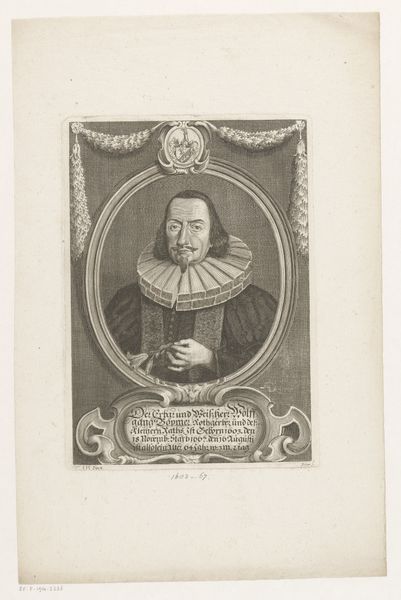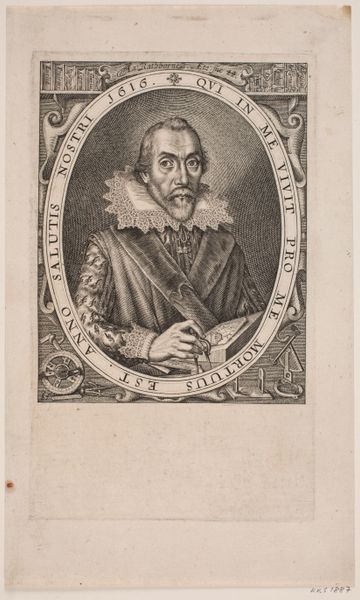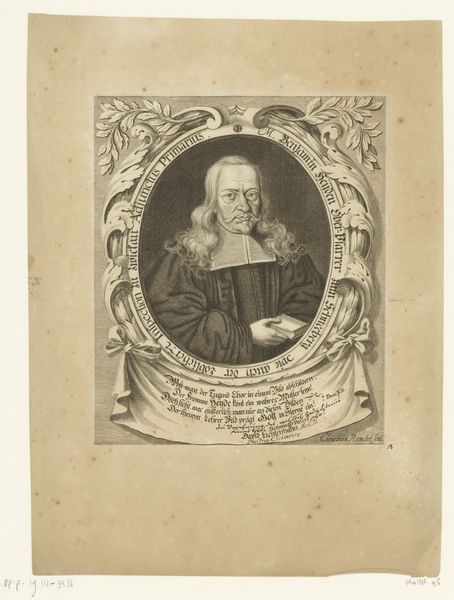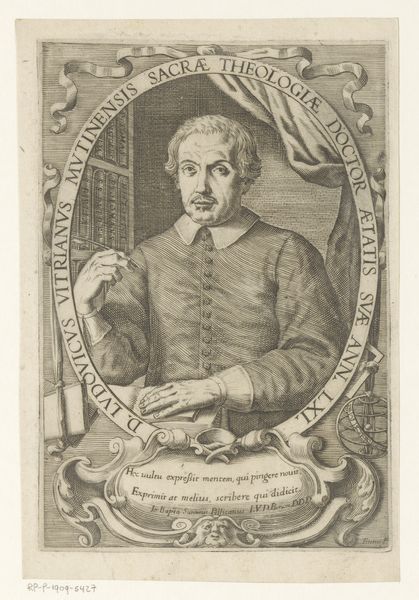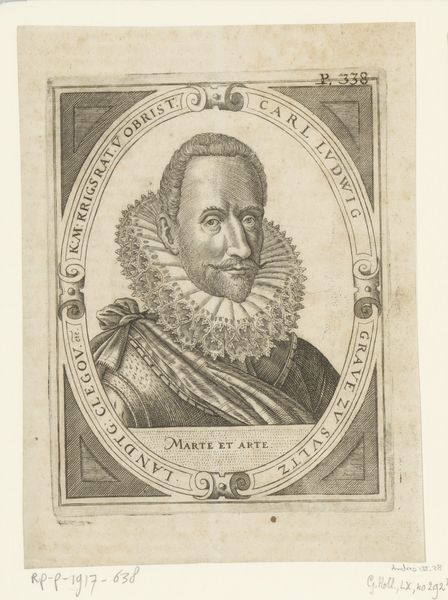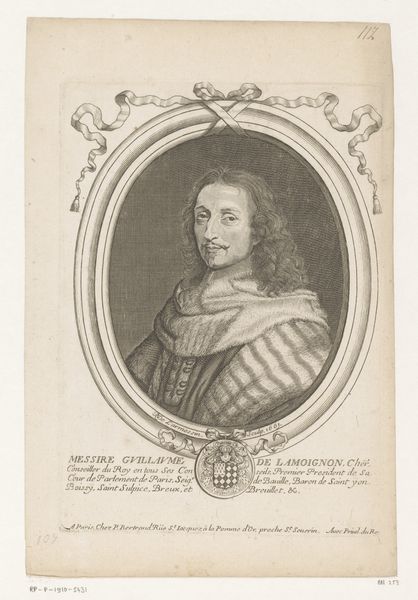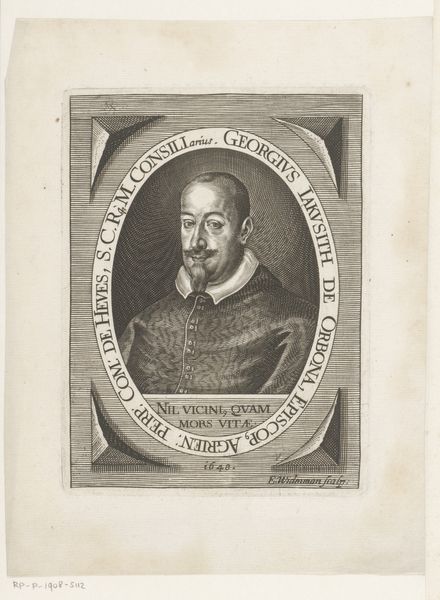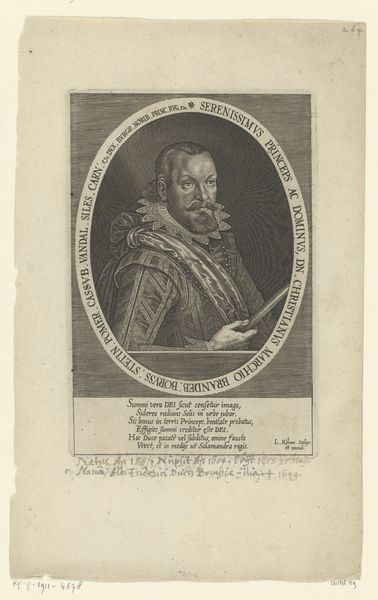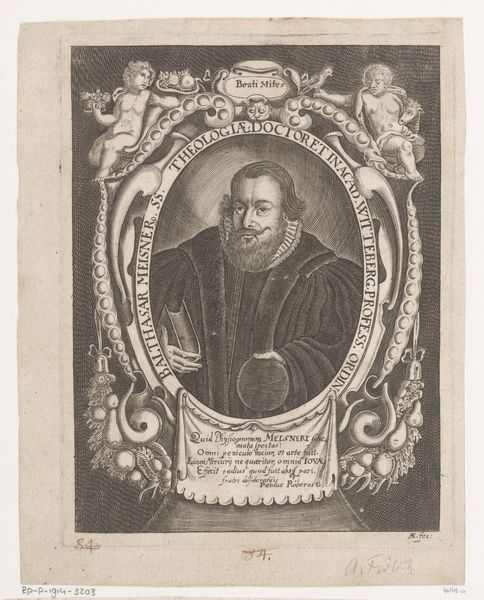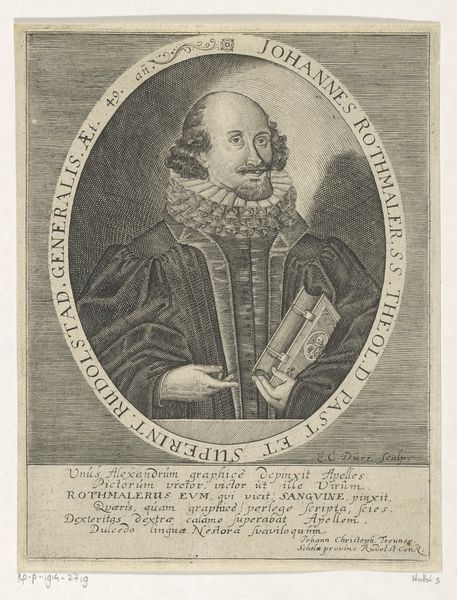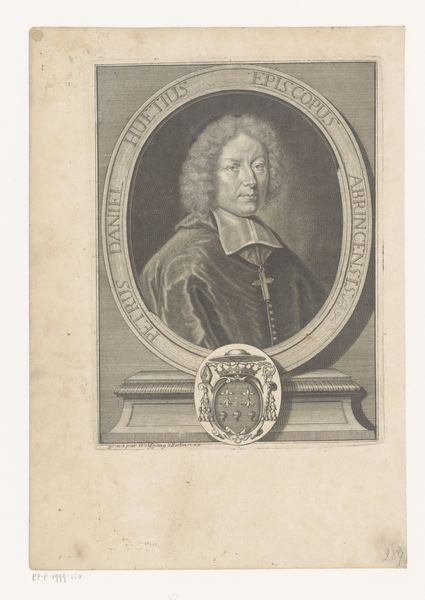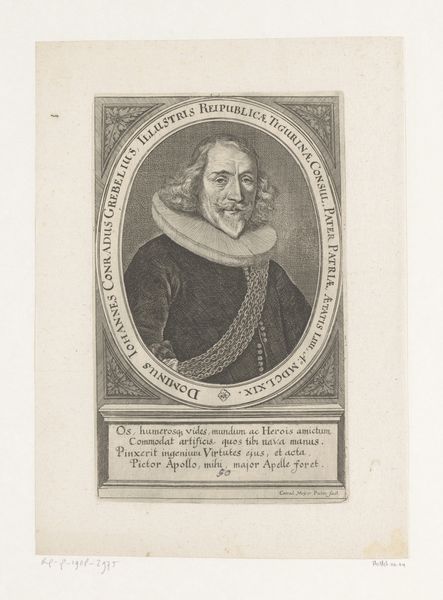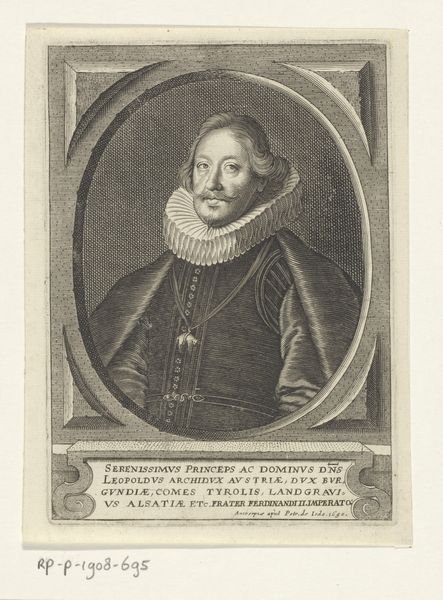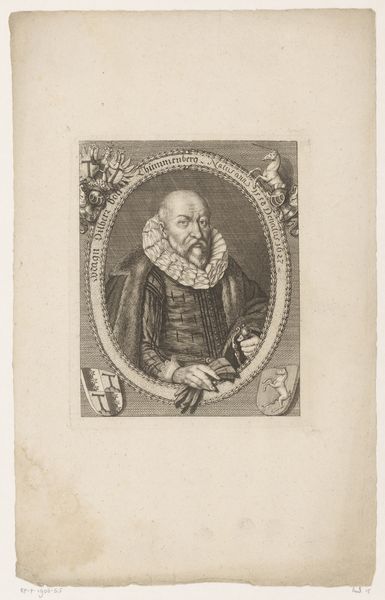
engraving
#
portrait
#
aged paper
#
toned paper
#
baroque
#
old engraving style
#
personal sketchbook
#
old-timey
#
history-painting
#
engraving
Dimensions: height 120 mm, width 93 mm
Copyright: Rijks Museum: Open Domain
Editor: Here we have Mättheus Rembold's "Portret van Nikolaus Ochsenbach," an engraving from 1646. The detail is just incredible! He looks very self-assured, maybe even a little intimidating. What do you see in this piece, beyond just a historical portrait? Curator: What I find striking is how this portrait, ostensibly a representation of an individual, speaks volumes about power and societal structures of the time. The armor, the inscription indicating his captaincy, these aren't just details – they are statements. Think about the Thirty Years' War, which concluded just two years after this was made. How might the trauma and the renegotiation of power influence its creation and reception? Editor: So, you're saying that the portrait is more than just a likeness; it's a claim of authority in a post-war world? Curator: Exactly. Consider, too, the visual language Rembold employs. The precision of the engraving, the framing oval, these elements evoke a sense of classical order and stability that was likely deeply appealing after decades of conflict. Who was Ochsenbach? What were his politics? These questions help unlock the portrait’s significance. Editor: That’s fascinating. I was just seeing it as a depiction of a man from a long time ago, but now I see it as participating in this broader political narrative. It really encourages a deeper look at how individuals both shape and are shaped by historical events. Curator: Precisely! And how art acts as a critical mirror, reflecting and refracting those power dynamics for future generations to interpret. I'm glad it gave you new insight.
Comments
No comments
Be the first to comment and join the conversation on the ultimate creative platform.
